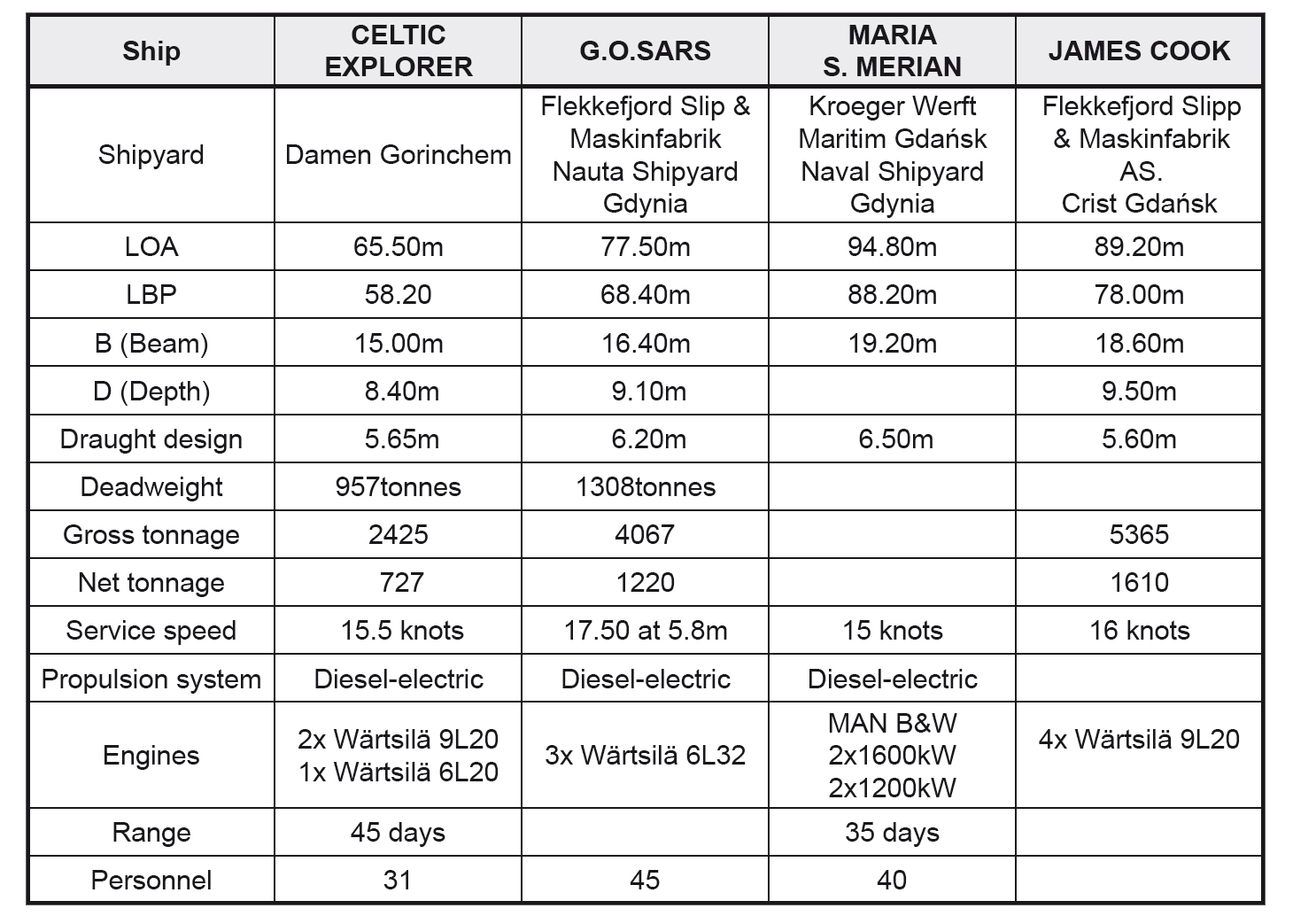

Fishery research vessel CELTIC EXPLORER
According to Significant Small Ships of 2003
The multi-purpose research vessel CELTIC EXPLORER was designed by SKIPSTEKNISK AS and delivered in December 2002 by Damen Shipyards Gorinchem for the Irish Marine Institute. Ireland has one of the largest offshore areas in Europe. Its unique strategic position in Europe, at the edge of the Atlantic, means that the new vessel will facilitate both national and international research and exploration.
The vessel is outfitted and prepared for such duties as fishery, acoustic, and environmental research operations as well as seabed mapping. Silent operation is crucial for vessels engaged in fishery research. The currently accepted standards are set out in Report 209 of the International Council for Exploration of the Sea (ICES). CELTIC EXPLORER is claimed to be the first vessel in the world to comply with ICES 209 in the required sound frequency range between 10Hz and 63kHz.
A sophisticated low noise diesel-electric propulsion system has been specially developed with the assistance of Dutch specialist Bakker Sliedrecht Electro Industries An extremely lownoise FP propeller of 3200mm-diameter is directly driven (without gearbox) by two direct current, low- speed electric motors coupled in tandem. Each of the low-noise DC motors has a maximum power rating of 1500kW at 180rev/min. The motors are fed and controlle by two Bakker custom built digital drives in a semi 24-pulse configuration together with two double winding transformers with an extra low-noise mode. The vessel can achieve a maximum speed of 15.5 knots at 100%MCR.
Power generation for the propulsion system and the main electrical supply is provided by three Wärtsilä diesel engines coupled to Indar generators. Two Wärtsilä 9L20 powered generators produce 1620kW each and a Wärtsilä 6L20 drives a 1080kW generator, all at 690V. Two thrusters are also important part of the propulsion system. An Elliot Gill pump-jet powered by a 720kW electric motor is installed in the bow and delivers a maximum omnidirectional thrust of 6.2t. A transverse tunnel thruster in the stern has a CP propeller and is powered by a 400kW motor.
The ship is fitted with a comprehensive array of winches and deck equipment enabling the vessel to handle a wide range of fisheries research equipment and nets, towed hydrographic sensors, and also to carry out other marine tasks over the stern. Eleven winches of Rapp Hydema AS make are installed on the vessel. Fishing operations are controlled by a sophisticated trawl winch and handling system with autotrawl displays and controls on the bridge. Two 30t split trawl winches located on the main work deck are each fitted with 3500m of wire and have a maximum line pull of 30t at 78m/min. A pair of 12t Gilson winches is located at the bridge level. Three net drum winches are provided, two rated at 35t line pull and one at 45t is fitted for towing purposes and incorporates a constant tensioning system. The trawl gantry operates in conjunction with a 5.6t net-sounding winch accommodating 3200m of 11mm diameter wire.
Three hydraulically operated deck cranes are provided: one elbow derrick crane 6t/15m, one 8t/15m and one telescopic derrick crane 2t/8m. The stern-mounted A-frame has lifting capacity of 25t, and a lifting frame with “T” configuration can lift 10t and is located on the starboard side of the main work deck.
In order to assist the deployment of scientific transducers, a retractable fin keel is provided just forward of amidships. The keel is located in an enclosed vertical steel trunk and can be raised or lowered by means of an electrically powered winch controlled from the bridge.
The facilities for scientific staff onboard include four well-equipped chemical laboratories, wet fish research, water sampling and dry procedures. A purpose-designed IT room is included and a dedicated scientist office and meeting room. A provision is made to accommodate additional scientific equipment in laboratory containers on deck.
Further information can be found on www.skipsteknisk.no
